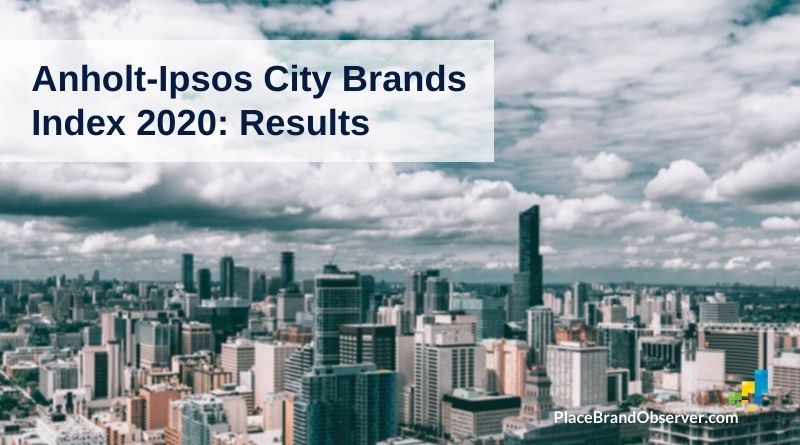From January 2-17, 2020, before the global impacts of coronavirus outbreak, Anholt-Ipsos surveyed an international pool of respondents to gather perceptions on the world’s top cities. COVID-19 has changed the rules of the game, but these results are nonetheless worthy of analysis, most notably for the destinations themselves to establish a benchmark during recovery planning and preparing to once again receive tourists. Measuring and monitoring the data to highlight strengths and demonstrate resiliency will prove useful as a performance indicator.
Key findings from Anholt-Ipsos City Brands Index 2020
From 2017 to 2020 the top 10 cities see both minor and major position swings. London takes 1st place, a feat which hasn’t happened since 2013, while Paris falls from 1st to 3rd seeing a drop of appeal in five of the six categories (Presence, Place, Prerequisite, People, and Potential). This opened up 2nd place for Sydney, whose brand improved in two of the six categories (Presence and Pulse). Amidst the remaining relatively stable top 10, Vienna strikes with an upset, moving its way into the 7th position behind Amsterdam (6th), achieving the city’s highest-ever ranking in the index.
Regionally, the Middle East and Africa are represented by Dubai, landing in the second tier (21-30), while Johannesburg, Cairo, Doha, Riyadh, and Nairobi rank in the fifth and final tier (41-50). The relative city brand strengths for Dubai and Cairo are their Pulse qualities.
Asia and the Pacific are made up of 12 cities which span the index across all tiers in 2020: Sydney and Melbourne both rank in the first tier (1-10); Tokyo in the second tier (11-20); Singapore, Seoul, and Hong Kong in the third tier (21-30); Beijing, Shanghai, and Bangkok in the fourth tier (31-40); and Taipei, Jakarta, and Mumbai in the fifth tier (41-50). Cities in this region are mostly recognized for their Presence, led by Tokyo, Beijing, Sydney, and Hong Kong each ranking within the top 10 list in terms of Presence.
How the Anholt-Ipsos City Brands Index works
Every two years Ipsos surveys a total of 5,000 people across ten countries and those respondents evaluate fifty global cities. Cities are evaluated on each of the following aspects:
- International status (Presence): Based on the city’s international status and standing and the familiarity/knowledge of the city globally. It also measures the city’s global contribution in science, culture, and governance.
- Physical appeal (Place): Exploring people’s perceptions about the physical aspect of each city in terms of pleasantness of climate, cleanliness of environment and the attractiveness of its buildings and parks.
- Amenities (Prerequisites): Determines how people perceive the basic qualities of the city; whether they are satisfactory, affordable and accommodating, as well as the standard of public amenities such as schools, hospitals, transportation and sports facilities.
- Warmth of their inhabitants (People): Reveals whether the inhabitants of the city would be warm and welcoming, whether respondents think it would be easy for them to find and fit into a community that shares their language and culture, and if they would feel safe.
- Activities (Pulse): Determines if there are interesting things with which to fill free time and how exciting the city is in regard to new things to discover.
- Educational and business qualities (Potential): Measures the economic and educational opportunities within the city, such as how easy it might be to find a job, whether it’s a good place to do business or pursue a higher education.
Together, the ratings in each of these areas create the index and final rankings.
This is a similar approach to the Anholt Ipsos Nation Brands Index, with the difference that the nation brand research program is run annually and includes perceptions from 20,000+ respondents across 20 countries.
Global results reveal which cities, and even regions, are more stable in terms of international perceptions ranging from Vancouver to Singapore and Houston to Melbourne. The City Brands Index shows how quickly certain cities can fall while others rise, likewise which cities can be clustered by their shared image and this regional view impacts their individual city brand.
More about Ipsos here. Curious which other rankings exist? Here an overview. More about the Anholt-Ipsos City and Nation Brand indices also in our interview with Jason McGrath.


